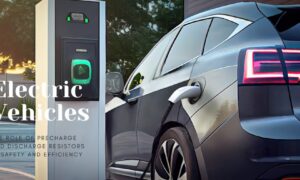In recent years, the automotive industry has experienced a profound transformation with the integration of cutting-edge technologies. The advent of connected cars has revolutionized the way we drive, making our vehicles smarter, safer, and more efficient than ever before. As we step into 2023, it’s time to delve deeper into the latest innovations in automotive electronics that are shaping the future of transportation.
Introduction
The Rise of Connectivity
Connected cars, also known as smart cars or Internet of Things (IoT) vehicles, have taken center stage in the automotive world. These vehicles are equipped with advanced sensors, communication systems, and software that enable them to interact with the outside world and enhance the driving experience. Here, we’ll explore some of the most exciting innovations in automotive electronics that have emerged in 2023.
5G Connectivity
One of the most significant breakthroughs in automotive electronics is the integration of 5G connectivity into vehicles. With lightning-fast data transfer speeds and low latency, 5G enables a wide range of real-time applications. Connected cars can now seamlessly communicate with each other, traffic infrastructure, and the cloud. This technology enhances navigation, enables over-the-air updates, and supports autonomous driving systems, making roads safer and more efficient.
AI-Powered Cockpits
The adoption of artificial intelligence (AI) in automotive electronics has given birth to AI-powered cockpits. These intelligent systems use machine learning algorithms to analyze driver behavior and preferences, providing a personalized driving experience. AI can adjust climate control, lighting, and infotainment based on the driver’s mood and habits, making each journey more comfortable and enjoyable.
Advanced Driver Assistance Systems (ADAS)
ADAS has been a game-changer in terms of vehicle safety. In 2023, we see even more sophisticated ADAS features, such as adaptive cruise control, lane-keeping assist, and traffic sign recognition. These systems rely on a combination of sensors, cameras, and radar to enhance driver awareness and reduce the risk of accidents. As ADAS continues to evolve, it paves the way for fully autonomous vehicles.
Enhanced Infotainment
The infotainment systems in today’s connected cars have evolved into immersive entertainment hubs. High-definition displays, augmented reality (AR) navigation, and voice-activated controls are becoming standard features. Moreover, these systems are increasingly compatible with popular smartphone apps, offering seamless connectivity and access to streaming services, social media, and more.
V2X Communication
Vehicle-to-Everything (V2X) communication is another breakthrough that promises to improve road safety and traffic management. This technology allows vehicles to communicate with each other and with traffic infrastructure, such as traffic lights and road signs. In 2023, V2X is being widely adopted to enable features like intersection collision warning, emergency vehicle alerts, and traffic flow optimization.
Cybersecurity Measures
As cars become more connected, cybersecurity becomes a paramount concern. Automakers are investing heavily in robust security systems to protect vehicles from cyber threats. These measures include secure communication protocols, regular software updates, and intrusion detection systems. Ensuring the safety of connected cars is essential to maintaining consumer trust.
Eco-Friendly Innovations
In line with the global shift toward sustainability, automotive electronics are also focusing on eco-friendly solutions. Electric and hybrid vehicles are becoming more mainstream, with improved battery technology and longer ranges. Moreover, smart energy management systems optimize charging and minimize environmental impact.
Remote Vehicle Management
Connected cars now offer remote management capabilities through smartphone apps. Owners can lock/unlock doors, start the engine, check vehicle diagnostics, and even schedule maintenance appointments remotely. This level of control enhances convenience and peace of mind for car owners.
Predictive Maintenance
Advanced sensors and AI algorithms enable predictive maintenance in connected cars. These systems monitor the vehicle’s condition in real time and alert the owner or service center when maintenance is needed. This proactive approach reduces the risk of unexpected breakdowns and extends the lifespan of the vehicle.
Augmented Reality Head-Up Displays (AR HUDs)
Augmented reality head-up displays are changing the way drivers interact with information. These HUDs project essential data, such as navigation directions and speed, onto the windshield, allowing drivers to stay informed without taking their eyes off the road. It’s a significant leap forward in terms of safety and convenience.
Conclusion
2023 is an exciting year for automotive electronics, with innovations in connectivity, AI, safety, entertainment, and sustainability reshaping the driving experience. Connected cars are no longer a distant future; they are here today, bringing us closer to fully autonomous and smarter vehicles. As technology continues to advance, we can look forward to even more exciting developments in the automotive industry. Connected cars are not just a mode of transportation; they are a glimpse into the future of mobility.



































